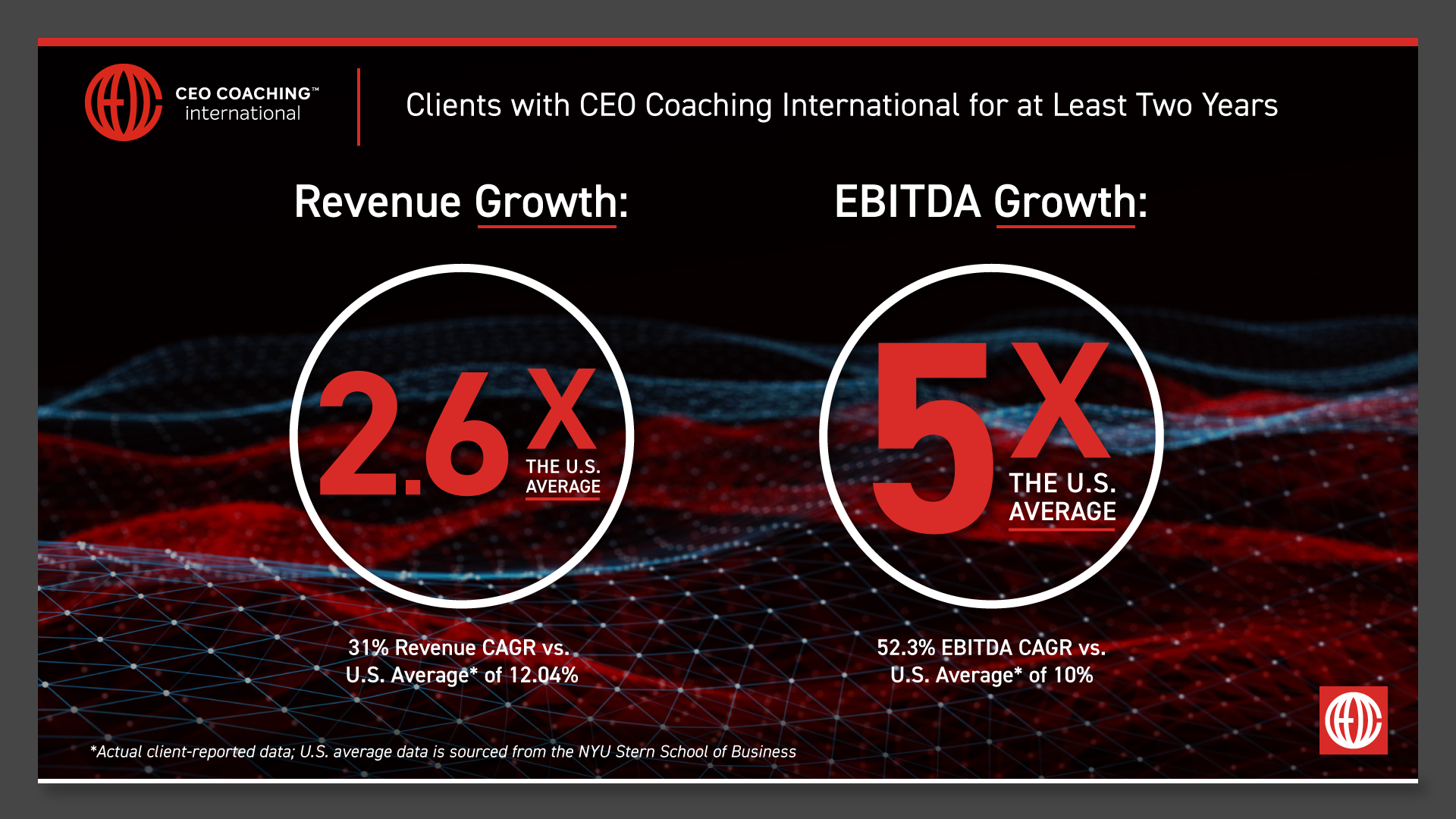
Are You a Paranoid Enough CEO to Thrive?
In his classic business book Only The Paranoid Survive, former Intel CEO Andrew Grove explained how managing strategic inflection points (SIPs) helped him lead the company through some BIG challenges. We try to help our CEO coaching clients anticipate, identify, and plan for their own SIPs by asking them, “What do you want, and what could get in the way?” Clarifying those answers creates a “healthy” paranoia that CEOs can continue to cultivate using three best practices from our Making BIG Happen System.
1. Stay dialed into your meeting rhythm.
Being paranoid isn’t enough: CEOs have to use a consistent communication rhythm to maintain company-wide alignment around both progress and problems.
We advise CEOs to keep these seven meetings on the company calendar:
Annual Planning Session: Start with your State of the Company Address. Review the previous year’s progress and set an inspiring Huge Outrageous Target (HOT) for the year ahead. Then, step aside and let your CEO coach run the session. Get down in the trenches and work with your team to establish the steps that will be necessary to achieve your HOT, short-term deadlines, and who’s accountable for what.
Quarterly Alignment Session: Meet with your leadership team to analyze what went right this quarter, what went wrong, what challenges need to be addressed, and what goals should be set to keep the company on track for its annual HOT. Anything you and your leaders have been paranoid about for the last three months should be on the agenda as well so that the company stays on track towards HOTs and grabs potential opportunities as early as possible.
Monthly All-Hands Meeting: Your leadership team updates staff on progress towards key goals and shares plans for the month ahead. Tell leaders to set aside 5-10 minutes at the end of the meeting to recognize company anniversaries, birthdays, and team members who have gone above and beyond.
Townhall Meeting: If, during the course of the year, your healthy paranoia uncovers significant problems, of if you sense paranoia affecting your workforce, address the entire company and open up the floor to feedback on what the company is doing right and what the company could be doing better.
Weekly Leadership Meeting: Review progress towards quarterly targets with your department leaders.
Weekly One-on-One: Have supervisors meet with each of their direct reports to gain feedback on how they feel about the company, review the employee’s performance and development, and discuss career development goals. You might do the same with your c-suite or any mid-level leaders who are showing potential for BIG growth.
Daily Huddle: Grab 5-10 minutes with each management team to touch base and set the agenda for the day ahead. Don’t sit, don’t chitchat. Take the temperature, chime in where you have to, and move on.
2. Be prepared to move fast.
By and large, CEOs responded to COVID-19 in one of two ways: they either hunkered down and tried to wait out a two-year pandemic, or they pivoted. And, by and large, the CEOs who were paranoid enough to act fast are the ones who are thriving in business today.
One powerful exercise that can help paranoid CEOs keep their companies nimble is to challenge your core identity. At least every two years, CEOs should ask themselves:
- What is our vision? Where are we on our trajectory towards that vision?
- Are the company’s HOTs BIG enough and inspiring enough to myself and key stakeholders?
- What are we doing just because we’ve always done it? What belongs on our Stop-Doing List?
- How are we attracting diverse talent who will broaden our perspectives and competencies?
- Do we have a mission beyond profit that connects with employees and customers?
- What is our value proposition?
- What are our core values? Could every employee in the company recite them?
- Does our culture promote learning and continuous improvement?
- What does my Org Chart of the Future look like?
- What are my competitors doing that we could do better?
- What’s an underserved customer niche we should be targeting?
A clear understanding of what’s really important to you, your employees, and your customers can make SIPs much easier to identify and navigate. By anchoring your pivot in your nonnegotiables, you’ll be able to adapt without abandoning your core identity. For example, if you understand your customer’s pain points in an inflationary environment, you’ll be able to adjust both your value proposition and your pricing model to help them weather the storm without scaling back your growth targets. If you’re paranoid about maintaining growth during a recession, you might start to refocus your resources around your most profitable products and services, while also reaching out to new vendors who can strengthen your supply chain.
3. Embrace change and leverage it to your advantage.
What you can’t do is nothing.
A historically strong economy lifted everyone’s boats for the last decade. Now that the water is receding, even the biggest ships are running aground on a very different world.
COVID was a powerful reminder that “waiting out” change isn’t an option. We may not be wearing facemasks anymore, but remote work forever changed employee’s expectations for how, where, and when they can do their jobs. Most CEOs who are still fighting flexible work schedules are just going to lose the battle for top talent. And any company that hasn’t adapted to consumer expectations for “on-demand” delivery of products and services will keep losing business to competitors who are meeting customers where and when they want to be met.
Paranoid CEOs also should be mindful that change has a way of happening slowly, and then all at once. Only three years after Blockbuster decided not to buy a DVD-by-mail competitor, Netflix grew to 1 million subscribers. AI and machine learning have been touted as “the next big thing” for years. Now, just four months after the release of ChatGPT, the tech sector is in an AI arms race. Much like the WFH revolution, CEOs who resist how tech could disrupt the familiar comforts of doing business are going to lag behind CEOs who give chatbot work to chatbots and free their best people to do what people do best: innovate, grow, and connect.
All CEOs should be paranoid about the challenges their companies could face in the months and years ahead. But don’t cling to what’s safe and comfortable just because you’re worried about what’s coming next. Plan with your team and your CEO coach to confront those red dots on your radar so that when you do meet your next SIP, you’ll be prepared to keep Making BIG Happen.
About CEO Coaching International
CEO Coaching International works with CEOs and their leadership teams to achieve extraordinary results quarter after quarter, year after year. Known globally for its success in coaching growth-focused entrepreneurs to meaningful exits, CEO Coaching International has coached more than 1,000 CEOs and entrepreneurs in more than 60 countries and 45 industries. The coaches at CEO Coaching International are former CEOs, presidents, or executives who have made BIG happen. The firm’s coaches have led double-digit sales and profit growth in businesses ranging in size from startups to over $10 billion, and many are founders that have led their companies through successful eight, nine, and ten-figure exits. Companies working with CEO Coaching International for two years or more have experienced an average revenue CAGR of 31% (2.6X the U.S. average) and an average EBITDA CAGR of 52.3% (more than 5X the U.S. average).
Learn more about executive coaching | Meet our world-class coaches





